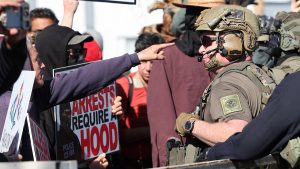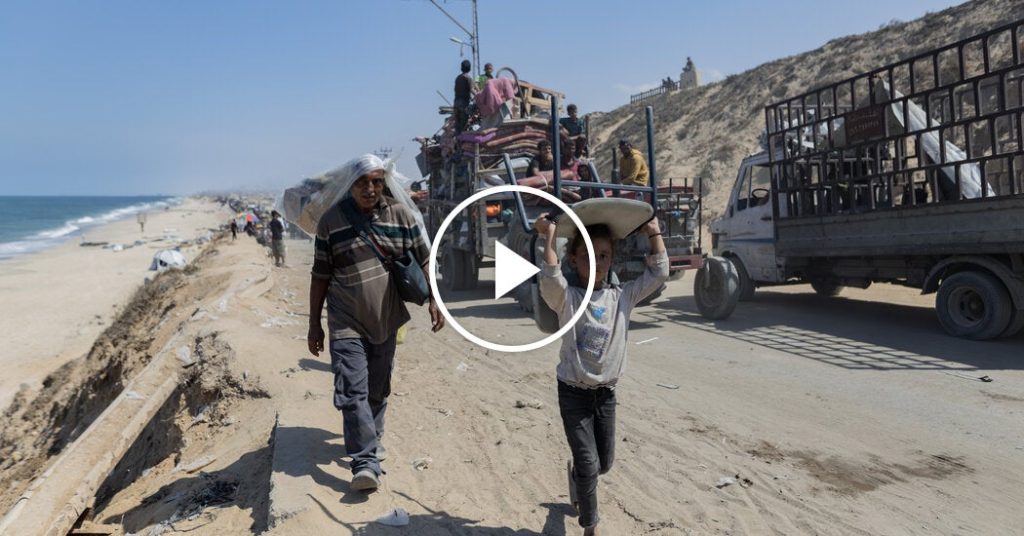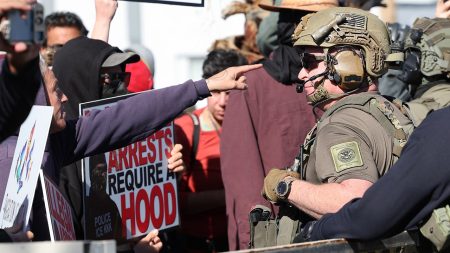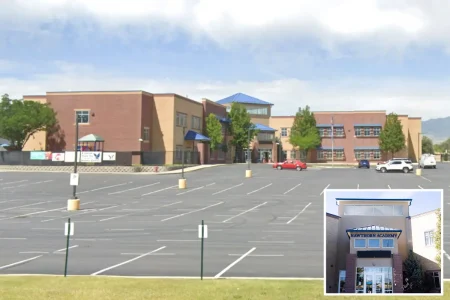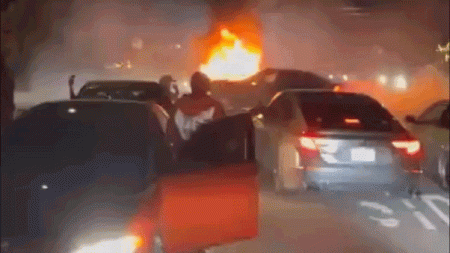Palestinians Flee Gaza City as Israel Expands Its Offensive
Mass Exodus Underway as Military Operations Intensify in Northern Gaza
By Alex Davidson | September 17, 2025
The following is a comprehensive report on the humanitarian situation unfolding in Gaza City as residents evacuate amid expanded Israeli military operations.
Displacement Crisis Deepens as Ground Assault Widens
Under a sky streaked with smoke from nearby strikes, Mohammed Al-Bayari methodically sorted through his meager possessions, deciding what few items his family could carry as they prepared to flee their home in Gaza City. “This is the third time we’ve had to evacuate,” Al-Bayari explained, his voice steady despite the circumstances. “Each time, we leave with less than before.” The 47-year-old schoolteacher represents just one family among thousands now streaming southward following the Israeli military’s announcement of expanded ground operations in northern Gaza. The intensification of the offensive has triggered what United Nations officials are describing as “a humanitarian emergency within an already catastrophic situation,” with an estimated 45,000 people displaced in just the past 72 hours.
The latest military push comes after weeks of escalating tensions and follows strategic shifts that Israeli defense officials claim are necessary to neutralize militant infrastructure. “We are targeting specific areas where intelligence indicates hostile activities are being coordinated,” stated Israeli military spokesperson Colonel Avichay Adraee in a briefing yesterday. However, humanitarian organizations on the ground report that the expanding operation has encompassed densely populated residential areas, leaving civilians with little choice but to abandon their homes amid dwindling supplies of food, clean water, and medicine. The evacuation order, delivered through leaflets dropped from aircraft and text messages to Gaza residents, gave families in certain neighborhoods less than 24 hours to leave – a timeframe that aid workers describe as “logistically impossible” for many vulnerable residents, including the elderly and those with disabilities.
Critical Infrastructure Collapse Compounds Civilian Suffering
As the exodus continues, Gaza’s already fragile infrastructure faces complete collapse. The Al-Shifa Medical Complex, the territory’s largest hospital, reported operating at 400% capacity before being forced to evacuate critical patients when fighting approached within one kilometer of its facilities. “We are performing surgeries without anesthesia and treating patients on the floor,” Dr. Nasser Al-Tatari told journalists via a spotty internet connection before communications were cut. “Now we must move these patients while knowing the journey itself could be fatal for many.” The World Health Organization confirms that fourteen healthcare facilities have ceased operations in the past week alone, while the remaining hospitals face critical shortages of fuel for generators, medical supplies, and personnel.
Water and sanitation systems have similarly buckled under the pressure of continued bombardment and fuel shortages. According to UNICEF, approximately 78% of Gaza’s population now lacks access to clean drinking water, dramatically increasing the risk of waterborne disease outbreaks. “Children are particularly vulnerable,” explained UNICEF regional director Adele Khodr during an emergency briefing. “We’re seeing alarming rates of dehydration and diarrheal diseases among displaced populations, especially infants.” Power outages have become nearly constant in most areas, with electricity available for just 2-3 hours daily in the limited locations where it functions at all. This has rendered communication nearly impossible for many families, with desperate relatives abroad often waiting days to confirm their loved ones’ safety.
International Community Divided as Humanitarian Access Remains Limited
The international response to the escalating crisis has been marked by diplomatic gridlock and contradictory statements. While several Western nations have expressed support for what they term Israel’s “right to defend itself,” a growing chorus of countries has called for an immediate ceasefire. At an emergency UN Security Council session yesterday, representatives from 47 nations demanded expanded humanitarian access to Gaza, but no binding resolution emerged from the contentious meeting. “Words of concern mean nothing to civilians facing bombardment and starvation,” remarked Jordan’s Foreign Minister Ayman Safadi. “Concrete action to protect civilian lives is what’s required now.”
Humanitarian aid delivery remains severely constrained despite repeated assurances of improved access. The Rafah crossing, a critical entry point for relief supplies, has operated intermittently and at reduced capacity, with an estimated 75% decrease in aid deliveries compared to pre-conflict levels. International relief organizations report that bureaucratic obstacles, security concerns, and damaged infrastructure have created a complex web of barriers to effective humanitarian response. “We have supplies sitting in warehouses just kilometers away from people in desperate need,” explained World Food Programme regional director Corinne Fleischer. “But getting those supplies to the people who need them has become nearly impossible under current conditions.” Several humanitarian workers have been killed in the conflict, further complicating relief efforts and raising serious concerns about compliance with international humanitarian law regarding the protection of aid personnel.
Psychological Trauma and Uncertain Future for Displaced Populations
Beyond the immediate physical dangers, mental health professionals warn of a generation-defining psychological crisis unfolding among Gaza’s population, particularly children. “What we’re witnessing is trauma layered upon existing trauma,” explained Dr. Mahmoud Suleiman, a psychiatrist who has established makeshift counseling services in a southern displacement camp. “Children are exhibiting severe symptoms – bedwetting, nightmares, selective mutism, and hypervigilance that will require years of specialized support to address.” Displacement itself carries profound psychological impacts, severing community ties and destroying the sense of security that home environments provide. For many families like the Al-Bayaris, this latest evacuation represents not just a physical journey but the abandonment of hope that normal life might resume in the foreseeable future.
The uncertainty of where displaced populations will ultimately find safety compounds their distress. Overcrowded shelters in southern Gaza are already far beyond capacity, with many families sleeping in school courtyards, on sidewalks, or in makeshift tents constructed from salvaged materials. “There is simply nowhere left to go,” explained Omar Shakir, regional director for Human Rights Watch. “We’re witnessing people being shuffled between increasingly smaller and more dangerous areas, with each move further depleting their physical and emotional resources.” As winter approaches, concerns about exposure to the elements add another dimension to the humanitarian emergency. Aid organizations are scrambling to distribute blankets and weatherproof materials, but supplies remain woefully inadequate compared to the scale of need. Meanwhile, Mohammed Al-Bayari and countless others continue their journey southward, carrying what little they can save of their former lives, uncertain if they will ever return to the homes they’ve been forced to abandon.
Diplomatic Deadlock Persists as Regional Tensions Escalate
The expanded offensive in Gaza City comes amid deteriorating regional stability, with cross-border exchanges between Israel and Hezbollah in Lebanon intensifying, and growing concerns about a wider conflict that could engulf multiple countries. Diplomatic efforts to broker a ceasefire have repeatedly faltered, with mediators from Egypt, Qatar, and the United States expressing frustration at the entrenched positions of key parties. “Every day without a ceasefire agreement means more civilian casualties and deeper humanitarian suffering,” stated UN Secretary-General António Guterres in a strongly worded appeal yesterday. Economic impacts of the conflict have rippled throughout the region, with disruptions to shipping routes, energy supplies, and cross-border commerce affecting economies already struggling to recover from previous crises.
As Mohammed Al-Bayari joined the stream of exhausted families on Gaza’s congested roads, the international debate about the conflict continued in distant conference rooms and diplomatic channels. For those on the ground, however, the immediate reality is one of survival amid increasingly desperate circumstances. “We don’t need statements or resolutions,” Al-Bayari remarked as he helped his elderly mother into an overcrowded vehicle. “We need the bombing to stop and the chance to live without fear.” As night fell over Gaza, temporary shelters filled beyond capacity, hospitals struggled to treat the wounded with dwindling supplies, and the sky periodically lit up with explosions – stark evidence that such basic human desires remain tragically out of reach for the territory’s beleaguered population.


